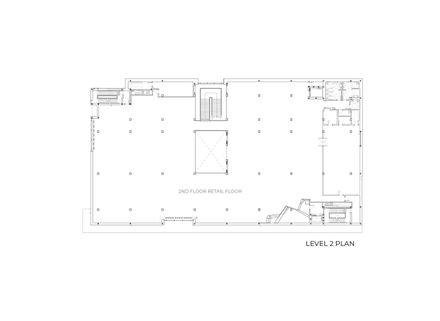Mec Vancouver
ARCHITECTS
Proscenium Architecture
LEAD DESIGN ARCHITECT
Hugh Cochlin
MANUFACTURERS
Soprema, Structurlam, Camino Modular Building Systems, Houston Landscapes, Lam Metal Contracting, Ombrae Studios And Keith Panel Systems, Pmc Builders, Transparent Glazing Systems
ARCHITECTURAL TEAM
Michelle Allard, Teague Shinkewski, Greg Piccini, Architect Aibc, Ron Clay, Mraic
FACADE ENGINEER
Ombrae
PHOTOGRAPHS
Shannon Elmitt, Kori Chan, Michael Elkan
YEAR
2020
AREA
5713 m²
LOCATION
vancouver, Canada
CATEGORY
Mixed Use Architecture, Retail, Sustainability
Text description provided by architect.
MEC Vancouver is a forward-thinking retail and office building at the gateway of the Olympic Village neighborhood in Vancouver.
The project was designed with sustainability at the forefront, integrating green features cohesively into the design.
The three-story mass timber building includes two levels of retail and one level of offices, with three stories of concrete parking below grade.
The structure invites community engagement through ample glass along the street and a cedar wood soffit/column canopy that runs the length of the building along 2nd Ave.
Inside, it prioritizes user wellness through generous daylighting, a tall floor-to-floor plate, and expansive views to the outside.
A double-height atrium shows off a steel feature stair and a fully expressed structure including a Douglas Fir glulam column and beam system with Spruce/ Pine CLT floors and roof.
Large raw steel brace frames provide seismic resilience and anchor the design expression.
High-performance features include high insulation and airtightness (R50 and R40 for the roof and walls) and strategic air handling through radiant heating and cooling.
A hot water loop system is connected to a district heating network (NEU) with a highly efficient power plant.
The building rejects heat to the district heating network, selling energy to the system (the first for buildings that use the NEU).
The building also harvests rainwater, collecting it by way of a blue roof to reuse in the greywater system.
A 15 000 L underground rainwater cistern is treated to strict regional standards for usage in the toilets, allowing for an annual reuse volume of over 500 000 L.
Combined with low consumption fixtures, it results in annual potable water use of 2,536 L/occupant, a total reduction of 46.6% compared to LEED reference.
MEC Vancouver’s landscape design references the history of the area by using industrial materials such as Corten steel, reused granite cobble, and native plants endemic to the False Creek Flats (including native grasses and climbing vines).
Water from two green roofs travels down a sloping Corten steel water feature and discharges into a water feature and bioswale.
Corten steel planters run the length of the building along Quebec Street and the laneway, where drought-tolerant planting creates a bird and bee-friendly habitat.




























